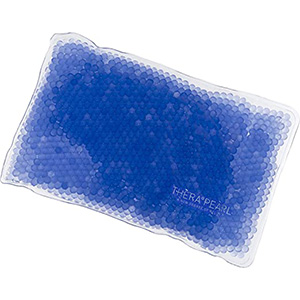There are a number of possible causes for a lump after a vasectomy. Some are completely harmless, while others may require medical attention. If you discover an unidentified mass after your vasectomy, be sure to contact your doctor as soon as possible for further examination.
Most post-vasectomy lumps generally fall into one of two categories: sperm granulomas or scrotal hematoma however, infection or abscess can also form a lump.
Sperm granuloma
A sperm granuloma occurs when sperm leaks from the surgery site. This leaked sperm can cause an inflammatory reaction, which can, in turn, become encapsulated in a lump of scar tissue. Sperm granulomas can vary in size, but they’re often described as being about the size of a pea. Larger or smaller granulomas are possible. It’s not unusual for a man with a granuloma to be able to feel it inside of his scrotum.
Granulomas typically occur two to three weeks after a vasectomy and are relatively common. The reported incidence is between 15%-40%.1 However, the exact rate can vary greatly depending on the study.
In most cases, sperm granulomas don’t cause any problems and go away on their own. They are often asymptomatic, meaning that the patient never even knows he has a granuloma. In about 2%-3% cases, the lump resulting from a granuloma can become a source of pain or discomfort.1 In circumstances where a painful granuloma does not resolve itself, a doctor may inject steroids into the mass to expedite the process. Surgery is another option, but should only be viewed as a last resort. It’s reported less than 1% of sperm granulomas require surgical intervention.2
Recommended products for recovery
We only recommend products we think are useful for our readers. If you make a purchase, we may earn a small commission. JockstrapsPapi Men’s Cotton Jock Strap 3-Pack
JockstrapsPapi Men’s Cotton Jock Strap 3-Pack Ice packsTheraPearl Ice Pack with Gel Beads
Ice packsTheraPearl Ice Pack with Gel Beads Home Vasectomy TestSpermCheck Vasectomy Test Kit
Home Vasectomy TestSpermCheck Vasectomy Test Kit Donut-shaped pillowErgonomic Innovations Orthopaedic Seat
Donut-shaped pillowErgonomic Innovations Orthopaedic Seat
Scrotal hematoma
A scrotal hematoma is a collection of clotted blood inside the scrotum. Hematomas occur when bleeding doesn’t fully stop after a vasectomy, or when bleeding resumes at some point after the operation due to trauma or other conditions. As the blood pools inside of the scrotum, it will eventually harden (clot) and form a firm lump. Scrotal hematomas occur in a very small percentage of vasectomies, the reported incidence rate is around 2%.3 Hematomas can be very unpleasant, but in the long term, they’re generally harmless.
Like sperm granulomas, hematomas can vary in size. Some hematomas are so small they aren’t even noticeable, while others may grow to the size of a walnut. A larger hematoma will often be easy to feel inside the scrotum.
Scrotal hematomas generally form shortly after the vasectomy procedure and are often accompanied by swelling, bruising, and pain. Hematomas will generally go away on their own after a couple of weeks as the lump of clotted blood, which makes up the hematoma is slowly absorbed into the body. Pain, bruising, and swelling may last for a similar amount of time. In some cases, larger hematomas can take up to two months to completely dissolve.
Your doctor may recommend hot baths, ibuprofen, and tight undergarments as ways to alleviate discomfort and speed up the recovery. Surgery may be necessary in extreme cases, but this is very uncommon.
Suggested readingLumps not related to vasectomy
It’s important to remember that finding a lump at some point after a vasectomy doesn’t mean it was caused by the operation. Hundreds of thousands of men have vasectomies every year, and a number of these men will develop completely unrelated issues at some point in their lives.
It can be difficult for a man to accept that a lump or mass discovered after a vasectomy is unrelated to the operation, but it does happen. There are a number of potential causes for testicular and scrotal lumps which may have begun to develop before the operation. These conditions can range from benign cysts to cancerous growths, but none of them are caused by vasectomy.
Summary
As a general rule, the only lumps you should ever find inside your scrotum are your testicles. Regardless of whether or not you’ve had a vasectomy, any unidentified mass should be promptly examined by a physician.
References and further reading
Vasectomy-Information.com has a strict sourcing policy. We rely on evidence-based medicine, peer-reviewed studies, reputable clinical journals, and medical associations. Learn more about how we ensure our content is accurate and up-to-date by reading our editorial policy.- Schwingl PJ, Guess HA. Safety and effectiveness of vasectomy. Fertility and Sterility. Published online May 2000:923-936. doi:10.1016/s0015-0282(00)00482-9
- McDonald S. Vasectomy review: sequelae in the human epididymis and ductus deferens. Clin Anat. 1996;9(5):337-342. doi:10.1002/(SICI)1098-2353(1996)9:5<337::AID-CA7>3.0.CO;2-9
- Adams CE, Wald M. Risks and Complications of Vasectomy. Urologic Clinics of North America. Published online August 2009:331-336. doi:10.1016/j.ucl.2009.05.009